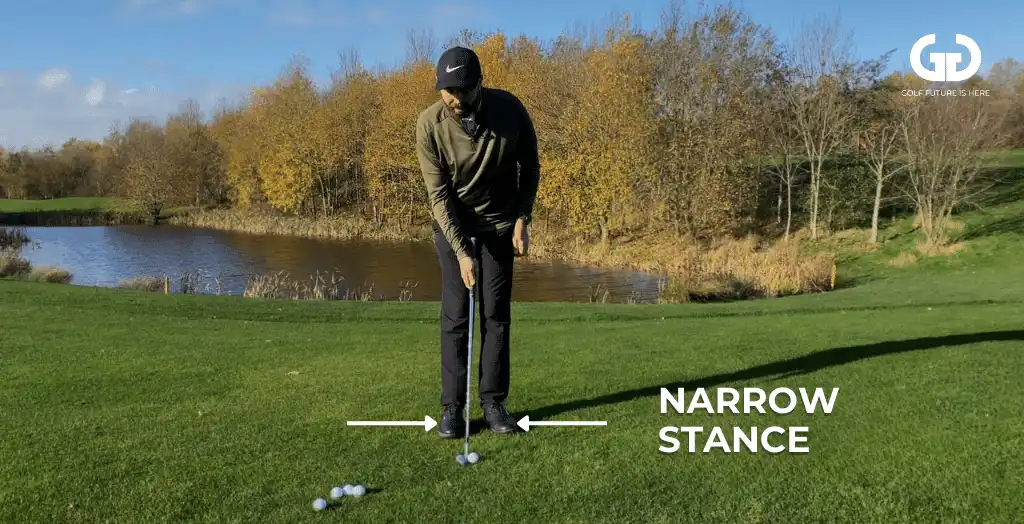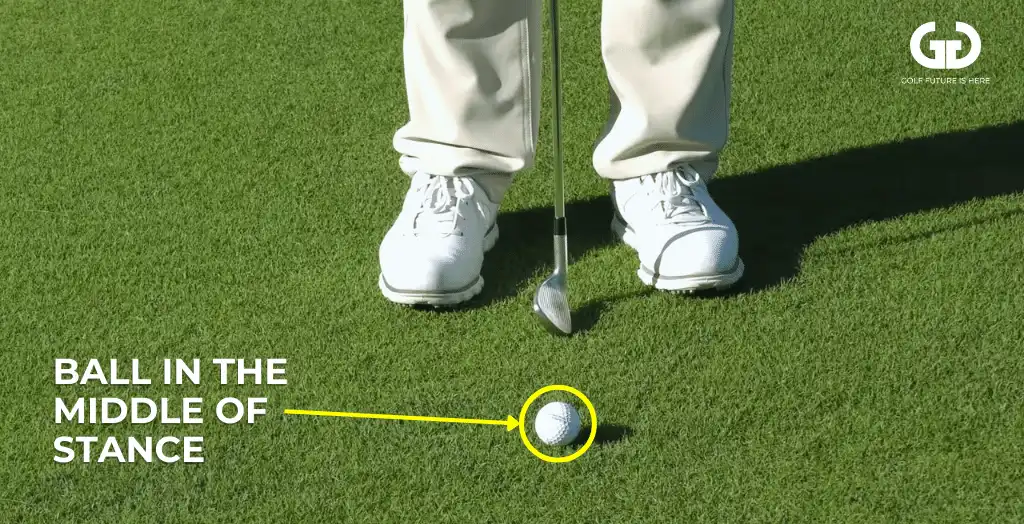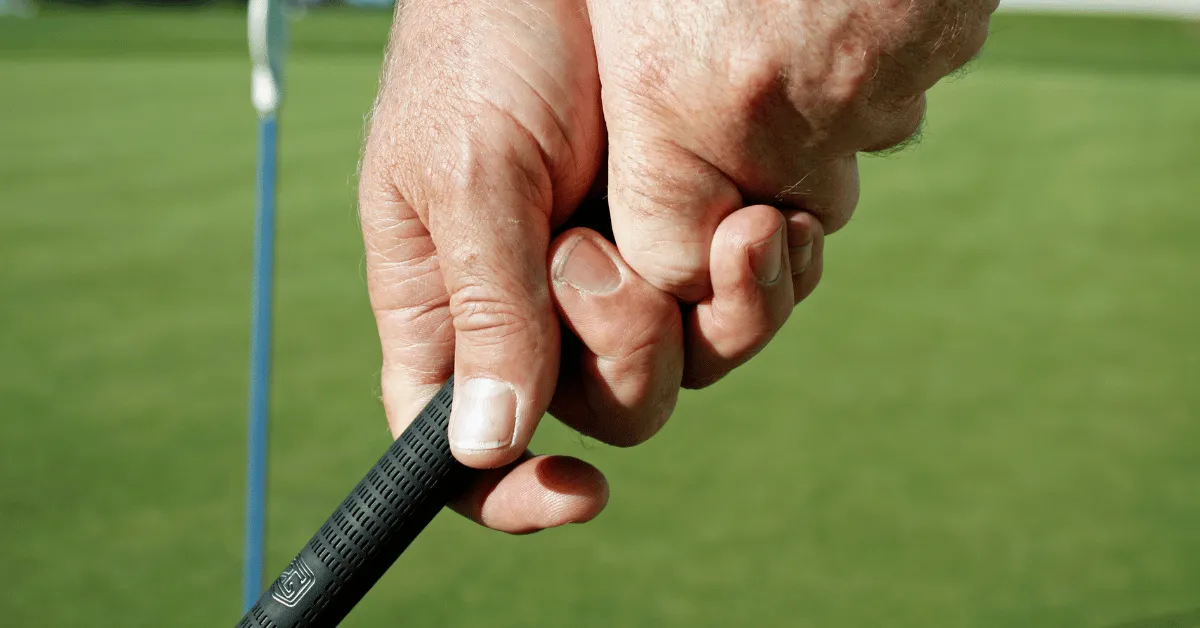Do you aim for better scores in golf?
Well, who doesn’t?
As a beginner, your ball often goes off the green, but not into it! Here’s where you should play the golf ball in one stroke so it goes into the green.
Therefore, chipping comes into the picture. It seems simpler than usual, but legitimately, it’s pretty challenging.
You would be thinking of why it isn’t easy to chip in golf; therefore, I’ve got your back! It requires one or two strokes, greater precision, and control over your ball.
Don’t move ahead directly; instead, it’s a systematic process, so let’s dig into the details!
Key Takeaways
- Chip shots in golf need greater precision since they are enclosed to the green, and so you need more control over the ball.
- Tweaking your posture, stance, and setup is per chipping golf is another ado, and you must know how to do it for chipping.
- Further to know how to control where the ball goes during chipping is something that the guide will answer you.
The Aim of Chipping
The aim of a chip shot in golf is that the ball goes from the fairway or rough onto the green. Thus, it should land, bounce, roll, or go close to or in the hole.
There are three essential aspects of chipping to remember:
- Consistent Strike: Hit the ball cleanly and consistently every time.
- Consistent Ball Speed: The speed with which the ball travels after you hit it should be consistent each time.
- Consistent Ball Trajectory: How the ball flies through the air should be steady and predictable.
You can chip well near the greens if your chipping achieves these three things.
Key Thought When Chipping
When you chip in golf, try that the ball shouldn’t rise to a much greater height in the air! Instead, you can brush the grass under the ball with your club.
Thus, you would hit the ball with greater precision.
Since you want your ball to rise higher, use a more lofted club or with a greater clubface area.
How To Chip A Golf Ball?
Chipping in golf is achieved in a series of steps. To do so, you need practice, and it isn’t achieved in a single go!
But you shouldn’t forget that practice is valuable only if it’s done in the correct direction. Here’s where I would help! So, let’s dig into the details.
1. Be In Proper Posture
Before playing any sport, it is quintessential to take the proper position. This rule applies in golf as well. However, here, the posture varies depending on the type of shot you play!
In the context of chipping in golf, my tried and tested posture is mentioned below:
- Bend forward a little bit at your hips, somewhat like bowing
- Keep your arms free such that the hand is down naturally beneath your shoulders
This posture keeps your arms comfortable, and you see them in the correct position to play. Further, it even acts as a good path for clubs to swing!
Additionally, many of you would still need help to hit the golf ball consistently!
Well, it happens when you are standing too upright because that’s not your natural way, and it puts you at an inconvenience.
Besides, for swings, it doesn’t set the correct path. Hence, avoid standing too rigid or upright.
2. Tweak Your Stance And Setup
Chipping varies from normal swings, as you do it usually from the fairway or fringe, where shorter swings are required.
Moreover, it demands you to mitigate your strokes more than that of swings. So, most of you would aim to sink the ball by chipping in one or two strokes.
However, you need greater control over the ball and hit with precision, which requires taking a proper stance!

Here’s how you can do it:
- Hold the club slightly lower on its grip (slightly towards the bottom, known as choking down).
- Keep your feet together roughly to the width of one golf clubhead.
- Lean your upper body and club slightly towards the target.
Thus, coupling with good posture, your stance will ensure a clean shot while chipping. Yet consistent practice is required!
3. Understand Ball-Turf Interaction
Understanding the ball-turf direction is the most important thing while chipping. Many of you would make the mistake of hitting the ball straight for chipping, but it’s barely true.
A rule in golf for chipping says that if you hit the ball slightly above the ground, it will rise and land smoothly on the green.

Therefore, tilt your body slightly towards the target. (The latter is where you aim your ball to land).
Tilting will ensure that the ball is hitting in such a way that it lands smoothly towards the ground. Thus, your chip shots would be better.
4. Understand Your Chipping Stroke
As mentioned above, you must keep your arms and shoulders lean naturally.
To further ensure, look at whether they form a triangle and don’t move around more, as this helps control your swing while chipping.
Further, ensure that your club is lower and less mounted. Therefore, it shouldn’t go higher than your hips.
Next, your swing back and forward (follow through) should be roughly the same length and thus balanced in size.
Moreover, if you swing too long, the ball will deviate from the target, or it can even become challenging to chip accurately.
Therefore, your backswing and follow-through should be of similar length so you can better control chip shots.
5. Develop Your Feel
Apart from mechanics, there are several other aspects to keep in mind. One of them is that some swing differently.
Apart from stance, posture, and setup, your swing still varies. Some players use their wrists a lot while swinging compared to others; others already have a smoother swing.

Therefore, you should choose your chipping style for comfort, convenience, and control over the ball.
Yet, as a rule of thumb, never grip the club too tightly; neither should your wrists be much stiffer. Otherwise, it would be challenging to rule out where your clubhead is, and you might mess up chipping.
To be precise, keep your wrists relaxed and flexible to chip the ball naturally.
6. Adjust Your Ball Position
During chipping, where you have placed the ball determines how successful your chip is!
For instance, keep your feet close together when it’s a short chip and put the ball slightly back of your stance. Thus, you can control your chip shots better.

Moreover, if you want your ball to rise higher, place the ball in the middle of your stance. However, if you aim the ball lower, it will have more spin, moving it slightly backward.
Therefore, the ball position will vary according to the chipping shot, from where you can control and even your comfort.
So, you should understand how your chip shot goes so you can tweak it accordingly!
7. Calibrate Your Distance Control
There is another essential step for chipping to control how far the ball goes. You would be thinking how to do so. You can calibrate your distance control for it, and here’s how to achieve it!
- Choose a comfortable chipping stroke of the size that you like
- Rather than choosing how hard you hit the ball, use different clubs
- With varying lengths and lofts, they travel towards different distances
Thus, your chip shots remain consistent, and you can control how far your ball travels with consistent practice!
To learn more about golf club distances, you can head over to this article.
8. Practice With An Alignment Rod
Consistent practice is quintessential for chipping in golf. To make your practice sessions better, use an alignment rod. It is a thin rod or stick to place outside your golf ball.
Further, when you swing, and your club hits the rod, your swing is in the wrong direction. It usually implies that it’s too much from inside to outside.
This increases the probability of off-swings, leading to bad shots known as “shank.”
Here’s where the rod helps you analyze and fix your shanks to chip accurately.
9. Pick A Target One-Third Away
During chipping, you should ensure how much your ball will fly and roll after landing. Figuring it otherwise is difficult; hence, I’ve shared how you can do so!
- Keep a tee or golf club at ⅓rd distance between your ball and hole
- Try to chip your ball such that it lands on the tee you have placed
- Take a look at how distant the ball rolls after landing
If the ball lands over the tee, it doesn’t sink into the hole; you should try using another club.
Using it, you would better understand how chip shots behave and thus choose a desired club per the distance it will cover. This improves your chipping skills.
10. Include Chipping In Your Warm-Up
Chipping requires a lot of practice, so you shouldn’t forget to warm up during chipping. Fewer chip shots during your practice also prove to be quite helpful.
Moreover, chipping during practice sessions has plenty of benefits, which include:
- Confidence boost while chipping
- Becoming a good chipper, you can recover your shots that didn’t sink into the hole
- It makes putting easier as you don’t have to putt the ball farther
A perfect swing is not essential to become a good chipper, but a smoother swing helps. Practicing chipping makes it easier and enables you to score better.
Check Out: 8 Types Of Golf Shots For Ultimate Power And Precision
How To Control The Distance Of Your Chip Shots?
Controlling how far your chip shot range helps you to hit the ball better and thus improve scores.
Doing so isn’t easier, yet this is what my never-fail tips say:
- When you chip at a short distance, make a shorter swing back and forth
- When you chip at a longer distance, make a longer swing back and forty
Instead of focusing the ball harder, you should focus on the length of your swings. Remember that your backswing and follow-through should have the same length.
Yet, if you want a smoother swing through impact, your follow-throughs should be longer than the backswing.
Tweaking your chipping swing length lets you control the distance your ball travels, and thus, you can chip the shot accurately.
How To Practice Chipping?
I’ve mentioned above that one of the most callable rips is to include chipping in your warm-up routine. Yet, you must know easier ways to practice chipping; hence, you can nail it efficiently!
Here’s how to begin with:
- Grab 5 balls and move to the chipping area
- Stand 10 big steps away from the hole
- Get your 9-iron club, and using it, chip each ball toward the hole
- Now, note how often a ball stops with 1 and 2 club lengths from the green.
Thus, you can improve your chipping and judge how far your shots are from the hole. After doing it, repeat the process at a long distance.
Which Club Is The Best To Chip?
No club is especially available for chipping.
Yet, you should always experiment with clubs like 6-iron, 7-iron, 8-iron, 9-iron, pitching wedge, and even a lob wedge.
It all depends upon the distance control it provides, the convenience with which it lands on the green, and which you find comfortable to play with!
When To Chip With A 7, 8, or 9-Iron?
Use a 7,8, or 9-iron for chip shots when you have a fringe near you and plenty of open green between you and the hole.
These clubs would help the ball to stay low and roll more instead of flying high. Thus, you can get the ball closer to the hole with a controlled rolling shot.
When To Chip With A PW, SW, or Lob Wedge?
There are certain chip shots that you want that go up in the air and don’t roll much after landing! Here’s where the Pitching wedge (PW), Sand wedge (SW), or Lob wedge comes into the picture!
There are several lobe instances when you can use PW, SW, or Lob wedge:
- When the distance between you and the hole is greater, these clubs pop the ball up and then drop it smoothly onto the green.
- If there’s an obstacle around, like a bunker or something you should overcome, then wedges are ideal as they help lift the ball higher.
- If your ball is in thicker grass, then the design of these wedges helps you get over such areas for a smooth shot from a tricky angle.
Thus, PW, SW, and Lob wedges are used when your ball is closer to the hole and in challenging areas.
The Final Word
You would have got the answer to how to chip in golf!
It’s essential to understand that in golf, your posture, stance, and setup vary according to the shot you are playing and the target for which you aim!
Similarly, you have to tweak them for chipping shots. Apart from following my guide, you should also experiment with different clubs and playing styles in chipping.
Nothing is doable without consistent practice in the proper direction, so follow the guide frequently, and don’t forget to include chipping in your warm-up routine!





0 Comments